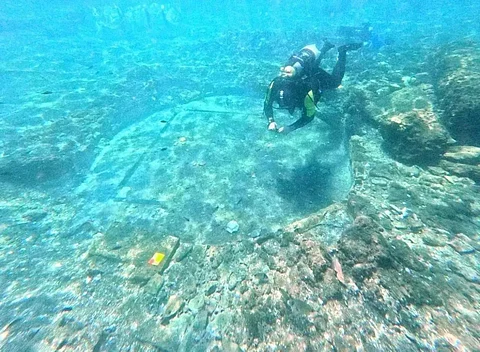
- Destinations
- Experiences
- Stay
- What's new
- Celebrating People
- Responsible Tourism
- CampaignsCampaigns
- Subscribe
- Buy Now

In recent events, archaeologists have uncovered a remarkably well-preserved Roman bathhouse, once owned by the famed statesman and philosopher Cicero, in the submerged city of Baiae near Naples. The discovery sheds new light on Roman architecture, luxury, and the scale of elite residences that once defined this ancient coastal hub.
Often dubbed the Las Vegas of the Roman Empire, Baiae was renowned for its opulent villas, elaborate thermal baths and status as a playground for the Roman elite. Submerged by volcanic activity and rising sea levels nearly two millennia ago, much of the city now lies beneath the waters of the Bay of Naples. Recently, as Italian archaeologists explored the area, they unearthed the remains of a bathhouse believed to have been an element of Cicero’s ensemble that was a grand villa.
The newly excavated bathhouse is speculated to have been integrated into Cicero’s coastal estate, where he retreated from public life. Measuring around 30 metres in length, the complex features traces of intricate heating systems that channelled hot air beneath the floors, a hallmark of Roman innovation. Its discovery adds to evidence that Baiae was a centre of advanced engineering and luxury architecture.
Marcus Tullius Cicero, one of Rome’s most influential figures in politics and philosophy, spent part of his later life in Baiae. He is believed to have owned a lavish villa in the city, and references in his writings describe his time by the sea. The newly discovered bathhouse matches descriptions of coastal retreats favoured by Cicero and other aristocrats of the period.
The submerged ruins of Baiae continue to offer insights into Roman society. This particular finding demonstrates how huge areas of the city progressively sank beneath the water due to natural causes, specifically volcanic bradyseism. Archaeologists contend that discoveries such as this bathhouse show the size of aristocratic homes as well as the significance of leisure and bathing customs in Roman society.
The site joins other spectacular remains in Baiae, including mosaics, statues, and sprawling villa foundations, many of which are now accessible only to divers. Experts suggest that the Cicero bathhouse could become an important addition to underwater heritage tours, offering the public a closer look at the splendour of Roman life more than 2,000 years ago.
(With inputs from various sources.)
